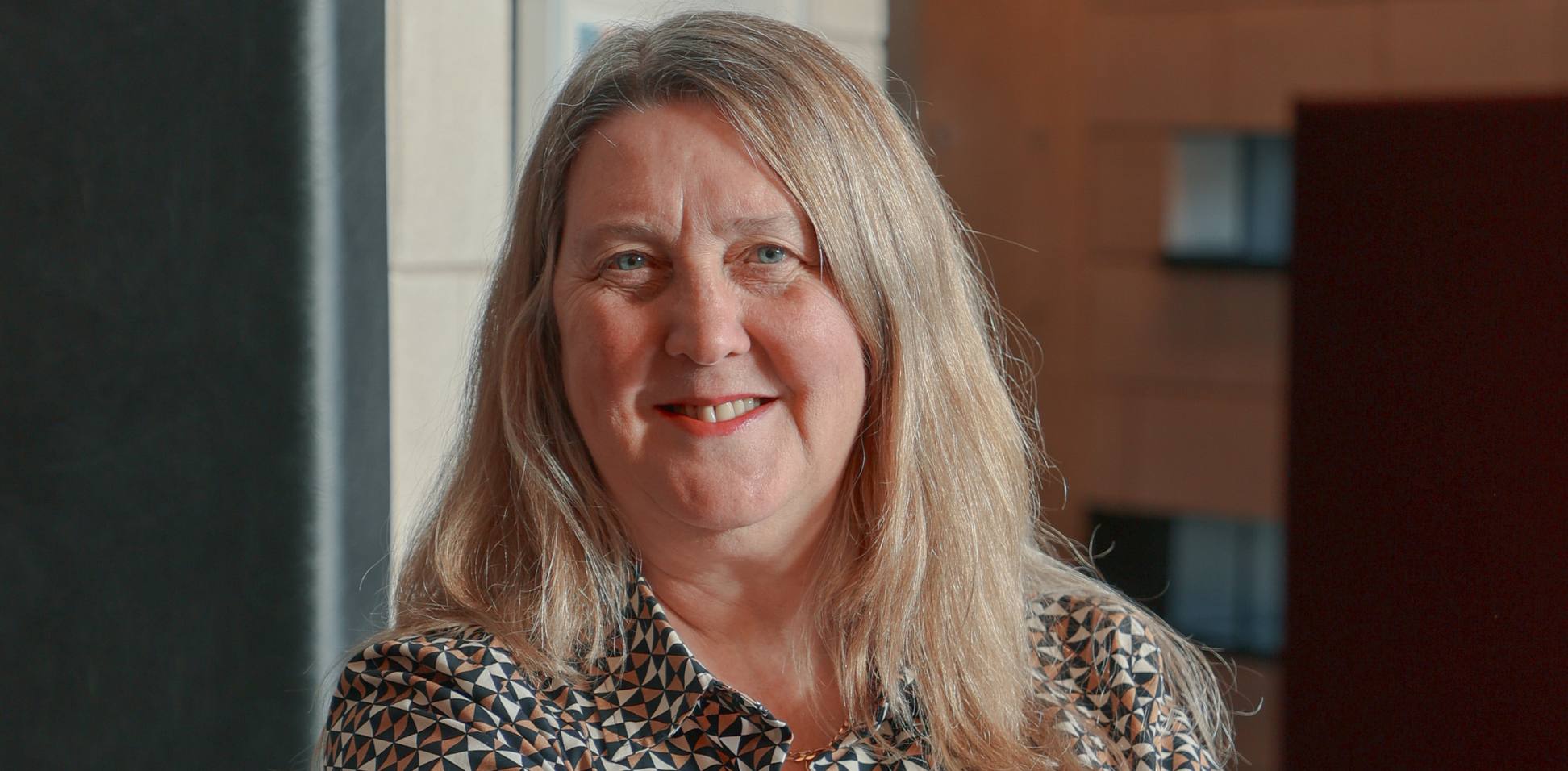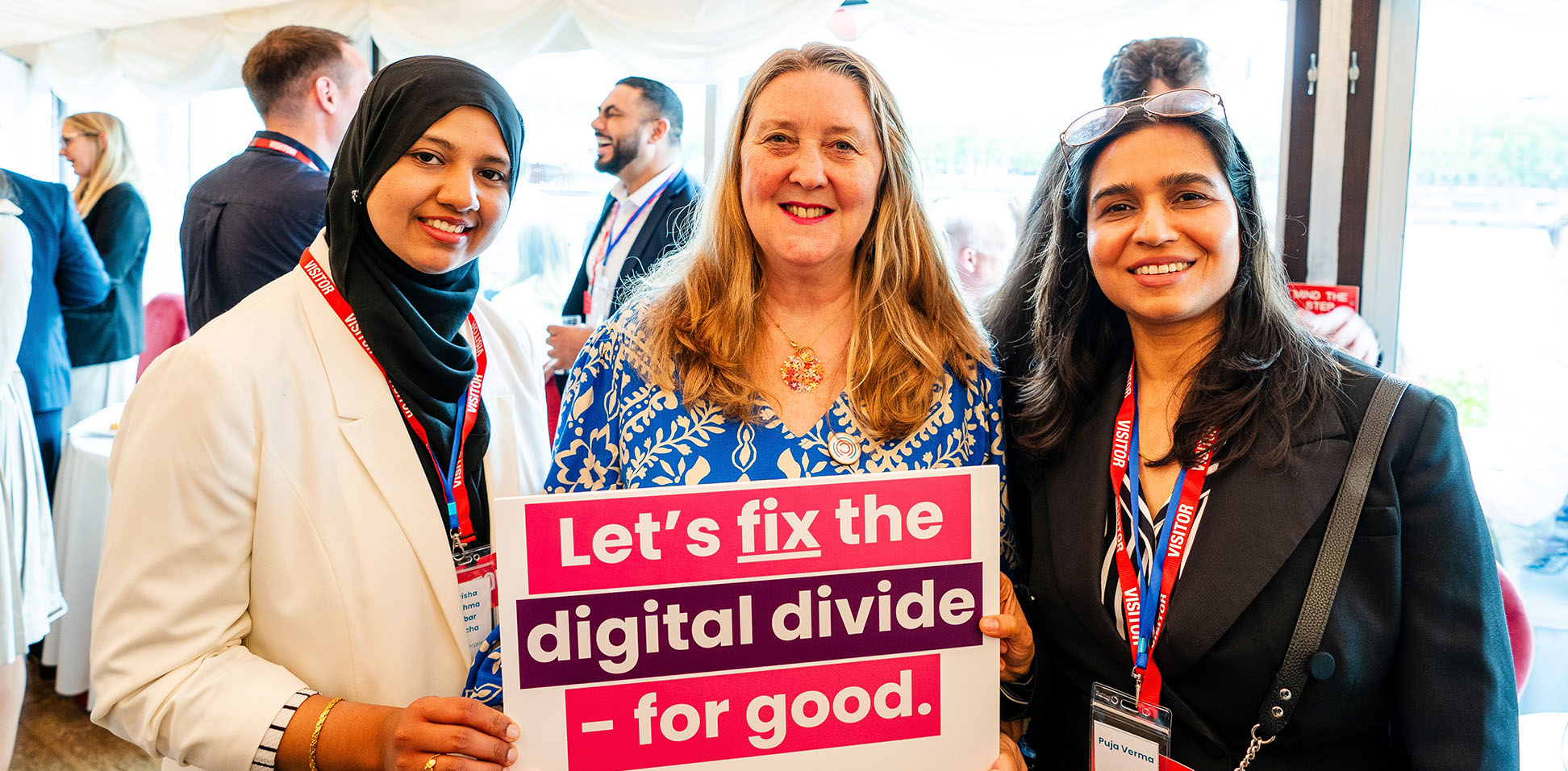How we created our new digital media literacy topics
We worked on a project with Ofcom to develop new media literacy topics for Learn My Way. Our Digital Services Manager, Mary Booth breaks down our approach and explores the process to bring these topics to life.
In today's digital landscape, digital media literacy is more critical than ever. But what exactly is media literacy, and why does it matter so much?
Digital media literacy is the ability to ”evaluate information, ask critical questions, avoid manipulation, and engage in digital spaces safely and confidently” (Media literacy now). In a digital world full of information - both accurate and misleading - and an online environment driven by personal data, having digital media literacy skills empowers people to be discerning consumers and active, responsible participants in the digital world. Without these skills, they are vulnerable to manipulation, misinformation and online harms.
To address this critical need, we've embarked on a project with Ofcom to develop new media literacy topics for Learn My Way. Our approach is rooted in collaboration and an understanding of the challenges people face in the digital age. Here's a look at our process:
1. Finding the connection between Essential digital skills and digital media literacy.
First, we looked at Ofcom's Media Literacy Outcomes Framework and the Essential Digital Skills Framework. We found nine areas where they overlapped, which were gaps on Learn My Way, which gave us a great starting point for new content. The nine areas identified were:
- Better able to identify and assess online risks and harmful content
- Better able to manage, deal with or get support in response to online risks and harmful content
- Takes greater steps to safeguard their mental health and wellbeing
- Better understands mis and dis-information
- Better able to identify mis and dis-information
- Better able to fact-check and verify information
- More aware of different types of media, online content and information sources
- Better understands the motivations of platforms, media companies, content providers and information sources
- More aware of persuasive design and technology and its effects on user experiences
2. Understanding the need: consultation is key
We wanted to create learning that would actually be helpful, so we asked our users what they needed! We conducted a thorough consultation process to pinpoint their most pressing digital media literacy needs. This involved several activities:
- Network survey: We included specific questions in our bi yearly survey to the National Digital Inclusion Network to gauge the perceived usefulness of media literacy resources and identify the most important topics. Of 256 respondents 83% felt that having access to media literacy resources would be very or somewhat useful.
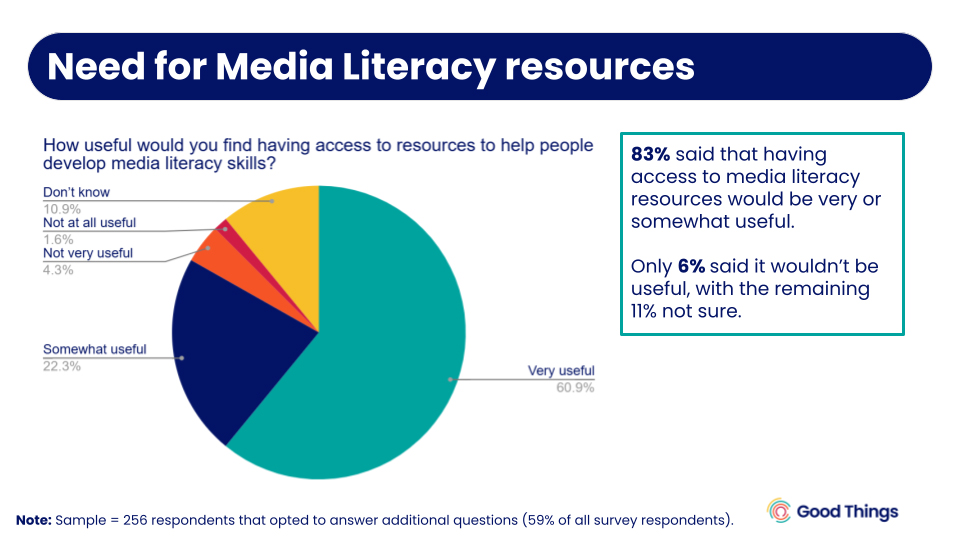
- Workshop with hubs and libraries: We held a workshop with 14 ambassador hubs and library network members to understand the challenges they face in supporting learners to develop media literacy skills. This interactive session helped us gather firsthand insights into the obstacles faced by organisations and knowledge gaps experienced by learners.
Some of the key challenges identified in the workshop were:
- Lack of strategic support and allocation of funds
- Low confidence amongst staff to support a media literacy offer and a lack of time/resource to upskill them
- A proportion of the learner audience face language and/or literacy barriers impacting their ability to engage with learning content
- Staff are not aware of suitable resources and those that are available are either outdated or not designed for our audience (mainly designed for young people)
- Learners are not motivated to acquire media literacy skills. This could be to do with the framing and lack of understanding of the risks/benefits. It could also be because learners go to hubs with an urgent need ( I need to fill in X form for help) or with a specific aim in mind.
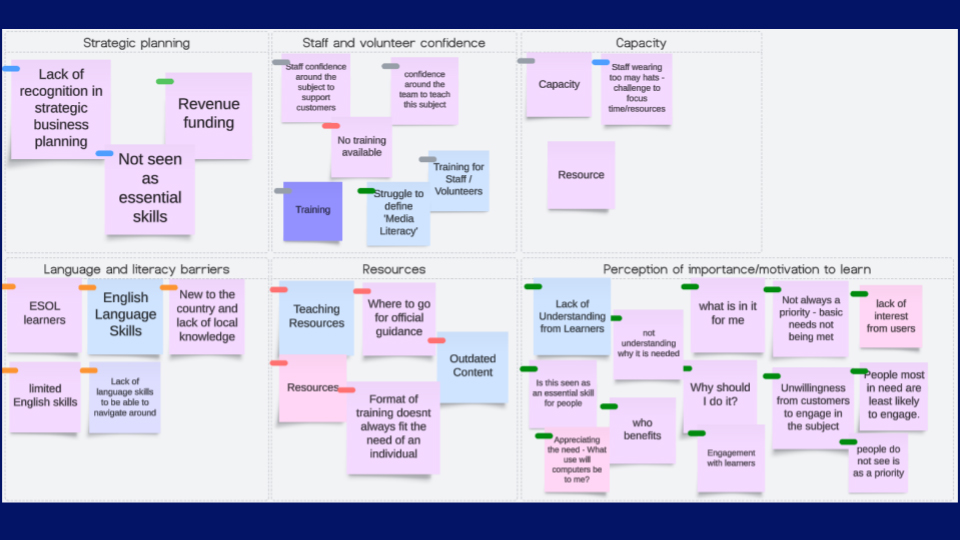
- Older People's panel: We also spoke with 8 members of our Older People’s panel to understand their specific experiences and concerns regarding online information.
3. Brainstorming and prioritising content
The consultation process provided us with a lot of valuable information. We then moved on to prioritising the content areas.
When prioritising, we considered the skills and knowledge gaps identified, the potential consequences of those gaps, and the interrelatedness of some of these outcomes.
The top four areas that we would prioritise for new content were identified through a dot voting exercise with workshop attendees, answers to our survey questions by the network and the results of a rating exercise conducted with our Older People’s panel. The areas were:
Data privacy: Why and ways companies may collect information about their users.
Steps to safeguard mental health and wellbeing online: Managing screen time for digital wellbeing.
Mis and Dis-information: Understanding, identifying and dealing with mis and dis-information.
Fact checking: Verifying online information.
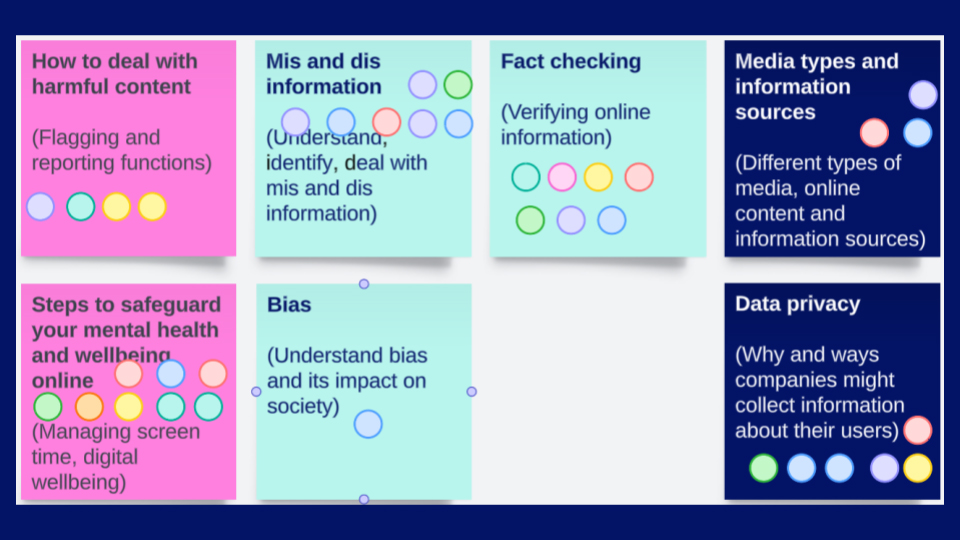
4. Designing and developing the new topics
Next, we created learning outcomes for two of the priority areas (data privacy and digital wellbeing) in part informed by what we heard in the workshops about the essential points to convey, and organised them into five bite-sized topics that align with the Learn My Way approach. Ofcom reviewed and provided feedback on our detailed scoping documents and topic outlines, and then we started writing and designing the content.
Adhering to our design principles we set out to create content that is easy to understand by simplifying ideas, using clear plain language, avoiding jargon and providing a safe space for practice.
5. Testing with users
Finally we tested the new topics with users to ensure they're easy to understand, engaging, and effective. Overall we had some brilliant feedback and users found the new topics clear and the learning valuable. They demonstrated the ability to replay the main messages of the topics reassuring us of their effectiveness.
Here’s what some of them had to say:
“This is all valuable information for people”.
“Very useful to people who do not know how data is being used and this is the way people are getting calls and emails they don't know where they're coming from”.
“We hear about cookies but we don't really know what they do - this has been informative.”
By following this collaborative and user-centered process, we are creating media literacy topics that address real needs and empower individuals to navigate the digital world safely and confidently.
You can explore our new topics by visiting our Learn My Way platform.
We have three new topics in Starting to use the internet:
- Introduction to digital wellbeing
- Building healthy digital habits
- How websites manage your behaviour
And two new topics in Safety and security online:
Work will continue during the year to develop new topics against the remaining two areas, focusing on developing critical thinking skills and encompassing, mis and dis information, verifying online information and dealing with harmful content.
Stay tuned for more updates on this exciting project!

